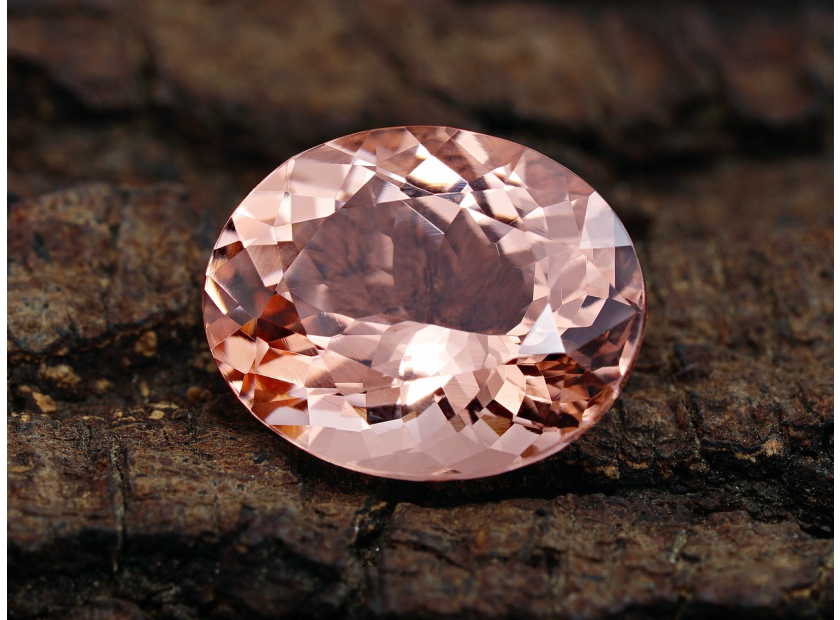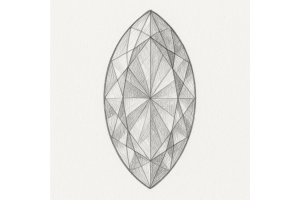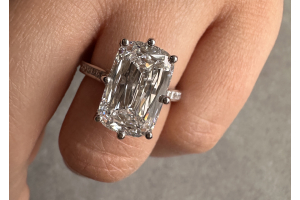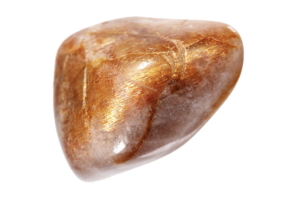GBP
/
GBP
/
Shipping to:
Currency:
Morganite vs Kunzite: Key Differences, Colours, and Which to Choose
When selecting the perfect pink gemstone, morganite and kunzite often top the list.
Both stones captivate with their delicate hues and unique characteristics, making them popular choices for jewellery enthusiasts.
But what sets them apart?
Let's delve into the details to help you make an informed decision.
Understanding Morganite
Origins and History
Morganite, a member of the beryl family—which also includes emerald and aquamarine—was discovered in the early 20th century.
It was named in honour of financier and gem enthusiast J.P. Morgan.
This gemstone is primarily sourced from countries like Brazil, Mozambique, and Madagascar.
Colour and Appearance
Morganite is cherished for its soft pastel shades, ranging from pale pink to peach and salmon tones.
Its subtle colouring exudes a gentle and romantic allure, making it a favourite for engagement rings and delicate jewellery pieces.
For those considering a unique ring, check out gemstone engagement rings for inspiration.
Physical Properties
With a hardness rating of 7.5 to 8 on the Mohs scale, morganite offers good durability for everyday wear.
Its vitreous lustre contributes to its brilliance, especially when well-cut.
Common Uses in Jewellery
Thanks to its appealing colour and durability, morganite is often used in rings, pendants, and earrings.
Its pastel hues complement various metal settings, including rose gold, which enhances its pink tones.
If you're considering a distinctive ring, check out non-traditional engagement rings for some stunning options.
Exploring Kunzite
Origins and History
Kunzite, part of the spodumene family, was identified in the early 1900s by gemologist George Frederick Kunz.
Significant deposits have been found in Afghanistan, Brazil, and Madagascar.
Colour and Appearance
Kunzite displays a range of colours from light pink to lilac and violet.
A notable feature is its strong pleochroism, meaning it can show different colours when viewed from various angles, adding to its visual intrigue.
Physical Properties
Kunzite has a Mohs hardness of 6 to 7, indicating moderate durability.
However, it has perfect cleavage, making it susceptible to splitting if struck.
Additionally, kunzite can fade when exposed to prolonged sunlight, so it's often dubbed the "evening stone" and recommended for occasional wear.
Common Uses in Jewellery
Due to its size availability and captivating colour, kunzite is popular in statement pieces like large cocktail rings and pendants.
Its sensitivity to light means it's best suited for jewellery that's not worn daily.
For vibrant and expressive pieces, check out gemstone rings for a wide selection.
Distinguishing Between Morganite and Kunzite
Colour Variations
While both gemstones exhibit pink hues, morganite leans towards peachy-pink tones, whereas kunzite often presents more violet or lilac shades.
This distinction can influence which stone aligns better with personal preferences or specific jewellery designs.
Durability and Wearability
Morganite's higher hardness makes it more suitable for everyday wear compared to kunzite.
Kunzite's perfect cleavage and light sensitivity necessitate more cautious handling and storage.
Brilliance and Clarity
Both stones can achieve excellent clarity, but morganite's refractive index typically results in a brighter sparkle.
Kunzite's pleochroism, while adding unique visual effects, can sometimes make it appear less brilliant from certain angles.
Availability and Cost
Morganite is generally found in smaller sizes and can be more expensive per carat than kunzite.
Kunzite's larger crystal formations make it more accessible for sizable jewellery pieces, often at a more affordable price point.
For more on value and comparison, check out this guide on lab-grown diamonds vs gemstones.
Making Your Choice: Morganite or Kunzite?
Lifestyle Considerations
If you're seeking a gemstone for daily wear, such as an engagement ring, morganite's durability makes it a more practical choice.
Kunzite, being more delicate, is better suited for occasional wear.
Design Preferences
For intricate designs requiring smaller stones, morganite's availability in petite sizes is advantageous.
Conversely, if a bold statement piece is desired, kunzite's larger specimens are ideal.
Budget and Value
Budget constraints may also influence your decision.
Kunzite offers a more affordable option for larger stones, while morganite, though pricier per carat, provides durability and a classic appeal.
If you're curious about what impacts gemstone pricing, check out this deep dive into gemstone and diamond formation.
Caring for Your Gemstone
Cleaning and Storage
Both gemstones should be cleaned with mild soap and warm water, using a soft brush.
It's essential to dry them thoroughly before storage.
Store each piece separately to prevent scratches.
Avoiding Damage
Protect your gemstones from harsh chemicals and extreme temperatures.
For kunzite, minimise exposure to direct sunlight to prevent colour fading.
Removing jewellery during strenuous activities can also prolong their lifespan.
Frequently Asked Questions
Is kunzite more valuable than morganite?
Generally, morganite is more expensive per carat due to its popularity and durability.
Kunzite, while often available in larger sizes, is typically more affordable but may require more care.
Can morganite be worn daily?
Yes, morganite's hardness makes it suitable for daily wear.
However, it's advisable to protect it from hard knocks and harsh chemicals to maintain its appearance.
Why does kunzite fade in sunlight?
Kunzite's colour can fade due to its sensitivity to ultraviolet light.
Prolonged exposure to sunlight can cause the hues to diminish, which is why it's recommended for evening wear or occasional use.
How can you tell the difference between morganite and kunzite?
While both stones share pink hues, morganite tends to have peachy undertones, whereas kunzite leans towards lilac or violet shades.
Additionally, kunzite exhibits pleochroism, showing different colours from various angles, unlike morganite.








